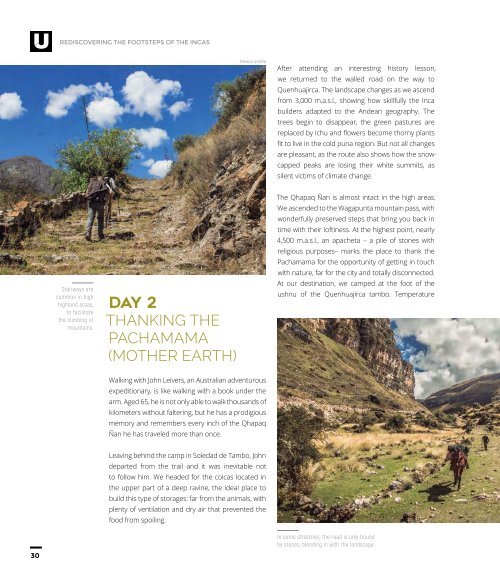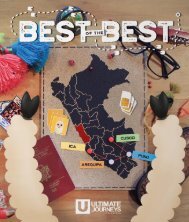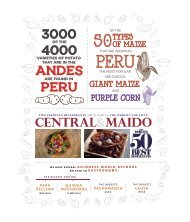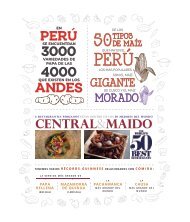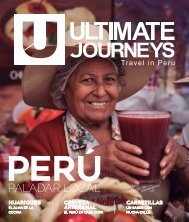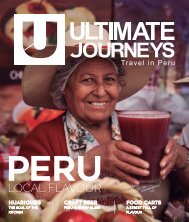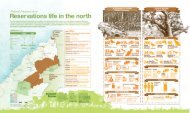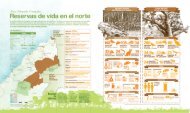UJ #14 - Qhapac Ñan
You also want an ePaper? Increase the reach of your titles
YUMPU automatically turns print PDFs into web optimized ePapers that Google loves.
REDISCOVERING THE FOOTSTEPS OF THE INCAS<br />
Ximena Arrieta<br />
After attending an interesting history lesson,<br />
we returned to the walled road on the way to<br />
Quenhuajirca. The landscape changes as we ascend<br />
from 3,000 m.a.s.l., showing how skillfully the Inca<br />
builders adapted to the Andean geography. The<br />
trees begin to disappear, the green pastures are<br />
replaced by ichu and flowers become thorny plants<br />
fit to live in the cold puna region. But not all changes<br />
are pleasant, as the route also shows how the snowcapped<br />
peaks are losing their white summits, as<br />
silent victims of climate change.<br />
Stairways are<br />
common in high<br />
highland areas,<br />
to facilitate<br />
the climbing of<br />
mountains.<br />
DAY 2<br />
THANKING THE<br />
PACHAMAMA<br />
(MOTHER EARTH)<br />
The Qhapaq <strong>Ñan</strong> is almost intact in the high areas.<br />
We ascended to the Wagapunta mountain pass, with<br />
wonderfully preserved steps that bring you back in<br />
time with their loftiness. At the highest point, nearly<br />
4,500 m.a.s.l., an apacheta – a pile of stones with<br />
religious purposes– marks the place to thank the<br />
Pachamama for the opportunity of getting in touch<br />
with nature, far for the city and totally disconnected.<br />
At our destination, we camped at the foot of the<br />
ushnu of the Quenhuajirca tambo. Temperature<br />
Walking with John Leivers, an Australian adventurous<br />
expeditionary, is like walking with a book under the<br />
arm. Aged 65, he is not only able to walk thousands of<br />
kilometers without faltering, but he has a prodigious<br />
memory and remembers every inch of the Qhapaq<br />
<strong>Ñan</strong> he has traveled more than once.<br />
Leaving behind the camp in Soledad de Tambo, John<br />
departed from the trail and it was inevitable not<br />
to follow him. We headed for the colcas located in<br />
the upper part of a deep ravine, the ideal place to<br />
build this type of storages: far from the animals, with<br />
plenty of ventilation and dry air that prevented the<br />
food from spoiling.<br />
30<br />
In some stretches, the road is only bound<br />
by stones, blending in with the landscape.


